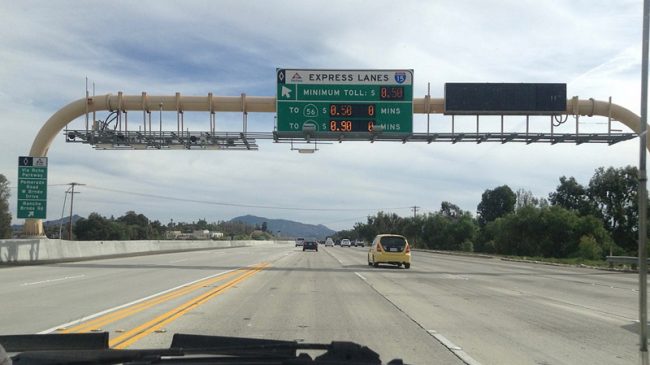Orange County landmarks and destinations, like Disneyland, depend on customers being able to get to them. The region’s transportation infrastructure plays a vital role in delivering tourists from Los Angeles International and John Wayne airports to the area’s hotels and attractions. Similarly, almost all of us use the regional infrastructure to help us get to work. The faster we can travel between home and work, the more job opportunities we have and the wider employers can cast their nets to find talent.
Southern California’s legendary traffic congestion limits those opportunities. It hurts individuals, business and the economy. As transportation planners search for solutions, they increasingly are looking for ways to get people out of their cars. And in recent years there have been growing calls to substitute commuter rail, light rail and high-speed rail projects for road projects.
But even if money is spent on rail instead of on roads, the rosiest predictions of Southern California planners say just 9 percent of commuters will be commuting by mass transit or bike in 2035.
The reality for Orange County and Southern California is that, even if transportation funding is diverted to rail and transit projects, over 80 percent of people will still commute in cars in 2035. Mind you, they may soon be driverless cars, but they’ll still be cars. Thus, any smart long-range infrastructure plan must focus on reducing traffic congestion.
Orange County is the pioneer of the approach the region should be taking. The two 91 Express Lanes handle 49 percent of the peak-direction throughput on the six-lane expressway, even though they represent only 33 percent of the physical lane capacity. These lanes take a simple concept – users pay – and show why it can be so effective. If you want to pay to move into the free-flowing lane, you can. If you don’t use it, you don’t pay for it.
Reason Foundation’s recently released Southern California Mobility Plan recommends taking that user-pays concept and applying it to existing car pool lanes. Today’s car pool lanes can be frustrating. Many are underutilized as the lanes next to them sit jammed. While other car pool lanes are just as packed as the general-purpose lanes.
Bottom line: Carpool lanes aren’t working as they were intended.
There are extensive carpool lanes across Orange, Riverside and San Bernardino counties. Southern California has 813 lane-miles of high-occupancy vehicle lanes, with a further 84 lane-miles under construction. All those lanes should be converted to variably priced toll lanes.
Shifted to toll lanes, they’d start to give the region the ability to create a network of free-flowing lanes and a reliable revenue stream for maintenance and upgrades. If every freeway offered drivers a priced option like the 91 Express Lanes, and these toll lanes were connected via improved interchanges, the area’s drivers, buses, emergency vehicles and economy would benefit.
Continued population growth in Riverside County and continued employment growth in Orange County are expected to progressively strain roadway capacity between the two counties. The two primary roadways, the 91 in the north and 74 in the south, need help. The 91 carries over 95 percent of the daily traffic volume crossing the Orange-Riverside County line, and it has one of the longest-lasting rush hour periods in the nation.
Because much of projected Orange County employment growth is expected to be in Irvine, Reason’s Southern California Mobility Plan recommends building the Irvine-Corona Expressway, from I-15 near El Cerrito to the 133 northeast of Irvine. The road would have variably priced toll lanes to ensure uncongested traffic conditions and generate additional revenue to help offset the $12.5 billion construction costs, which could be privately financed because of the future toll revenue.
Those types of targeted investments can go a long way toward easing Southern California’s infamous traffic jams. As former U.S. Transportation Secretary Norman Mineta wisely put it, “Congestion is not a scientific mystery, nor is it an uncontrollable force. Congestion results from poor policy choices and a failure to separate solutions that are effective from those that are not.”
Baruch Feigenbaum is assistant director of transportation policy at Reason Foundation. This article originally appeared in the Orange County Register.

